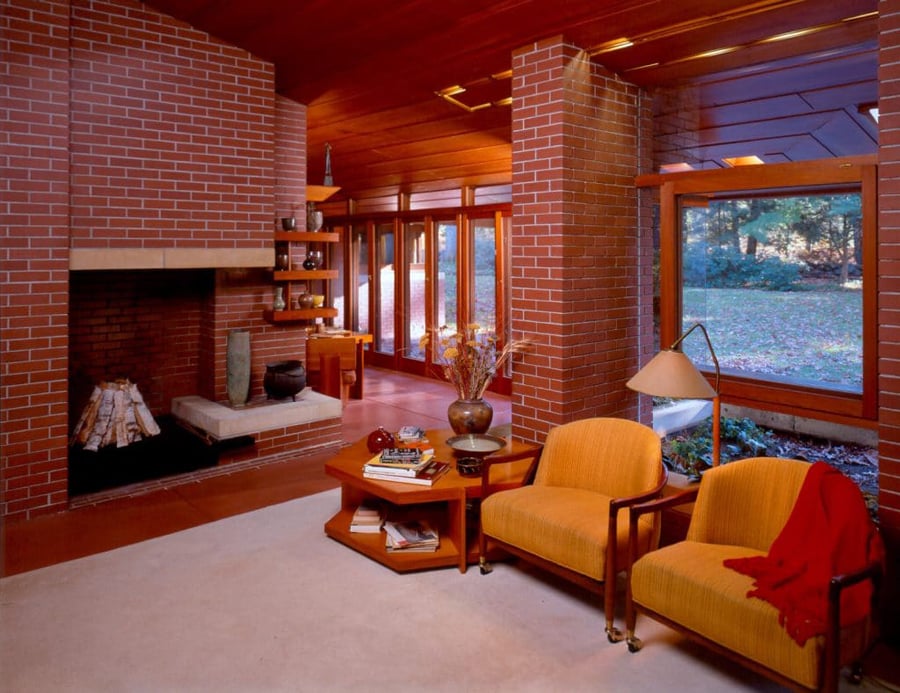
Why this 1930s architecture is attractive again in 2025
Share
In 1936, American architect Frank Lloyd Wright laid the foundations for a visionary concept: the Usonian. In an era marked by the Great Depression, he envisioned a home for the middle class: simple, functional, integrated into its environment, and accessible .
Nearly a century later, this style is enjoying a resurgence of interest. As contemporary design questions its excesses and decoration turns toward slow deco , the Usonian spirit is reemerging as an attractive alternative. But why is it still so appealing today?
Origins: Wright's Accessible Utopia
Unlike his prestigious villas like the famous Fallingwater , Wright designed Usonian houses as democratic habitats . The innovations are numerous:
- Open plans : elimination of corridors, integration of the kitchen into the living space.
- Elimination of superfluous : no attic, no basement.
- Local and raw materials : brick, wood, concrete, in harmony with the environment.
- Integrated functionality : bookcases, benches, storage spaces designed from the outset.
The term “Usonian” refers to the United States of North America . More than a style, Wright proposed a vision: a sober, modern, and accessible American house.
How can we be inspired by it today?
You don't need to live in a Wright-designed house to embrace the Usonian spirit. It's easy to incorporate its codes into your decor:
- Low furniture with straight lines , for visual stability and serenity.
- Natural materials : light wood, stone, ceramic, raw textiles (linen, wool).
- Dialogue with nature : large plants, green balcony, natural light.
- Built-in storage to keep your space neat and tidy.
- Earthy palette : sandy beige, brown, soft green, mineral gray.
Even in a small apartment, you can find the Usonian spirit: an integrated reading corner, a neutral palette warmed by wood, a minimalist but warm atmosphere.
Why a return to grace in 2025?
The current attraction to Usonian can be explained by several strong trends:
- Slow decor and sustainability : a return to wood, stone and local materials.
- A human-sized home : far from the “Instagrammable palaces”, the Usonian house favors intimacy and everyday life.
- Timeless design : its simple and warm lines always inspire architects and decor brands.
- Ecological and economic context : in the face of property and energy inflation, the idea of accessible and economical housing takes on its full meaning.
Where many decorative trends quickly fade, Usonian style stands out as a lasting and credible response to contemporary needs.
More than a style, a state of mind
The Usonian style is not just an aesthetic frozen in the 1930s. It is a philosophy of life : simplicity, harmony with nature, functionality in the service of everyday life.
In 2025, it finds a new lease of life because it responds to our contradictions: wanting interiors that are beautiful but practical, soothing but lively, modern but timeless.
Ultimately, what seemed like a utopia 90 years ago turns out to be a compass for the architecture and design of the future. Wright sensed that the home should not be a luxury, but an extension of oneself and one's environment.
His legacy remains clear: in a society in perpetual motion, the Usonian reminds us that the ideal habitat is not in excess, but in sobriety, humanity and sustainability.
